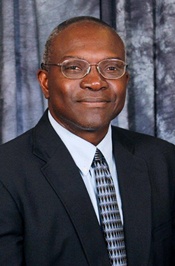Research suggests bias against women in technology hampers innovation, part of ‘STEM crisis’
by April 24, 2017 8:16 am 553 views

During a recent Women in Technology Conference at the University of Arkansas, National Center for Women & Information Technology Associate Director Terry Morreale pointed to widely published research in order to back up her assertion of ongoing bias against women in tech fields in the U.S. — and she also revealed her own apparent blind spot on the subject.
Indeed, a Harvard-designed test meant to gauge social attitudes showed Morreale to have a “moderate bias” against women in technology fields, she said.
Given her background and role in the industry, Morreale said her knee-jerk negative reaction to women in tech is symptomatic of a cultural issue.
“I have a degree in computer science. I work at NCWIT. I spend almost all of my waking hours thinking about this and how do we fix it, and I have a bias against women in tech,” Morreale said, during a speech April 12 at the Donald W. Reynolds Center for Enterprise Development on the UA campus.
Bias impedes diversity, a key tenet of competitiveness in a given industry, and it is lacking nationwide in science, technology, engineering and math fields. Morreale spoke on the subject at the conference, as did several of her colleagues.
The mission of NCWIT is to increase the meaningful participation of women in computing. It works with 450 member colleges and universities, including the University of Arkansas in Fayetteville, the University of Central Arkansas in Conway and the North Arkansas College in Harrison. Its other partners range from the industry level to K-12 education programs.
“We have a pipeline problem, and it starts in elementary school,” Morreale said.
Research shows girls and boys show similar interest levels in STEM at a young age, but it decreases for girls as they get older. Women comprised 57% of overall bachelor’s degree recipients in 2015 and only 18% of bachelor’s degree recipients in computer science, according to NCWIT. Women in 2016 made up 57% of the professional workforce in the U.S. but only 26% of computing occupations, according to NCWIT. The representation of non-white females was lower. Asian women made up 5%, African-American women made up 3% and Hispanic women made up 2% of the computing industry.

On an executive level, 20% of Fortune 500 chief information officers are female. Almost all corporate chief tech officers are men.
Progress is being made, Morreale said, because of organizations like Code.org and other initiatives. For example, the percentage of female college students intending to major in computer science was 0.3% in 2004 and is now close to 2%. However there is more work to do, she said.
CONTRIBUTING TO THE ‘STEM CRISIS’
“Innovation is better when you have a diverse group of people, according to research,” Morreale said, adding that the result is a “better team to solve problems better and faster.”
This applies to having representation from different genders and ethnicities, in addition to “diversity of thought.” “It’s not just what you can see,” she said.
Ron Darbeau, dean of the University of Arkansas at Fort Smith College of Science, Technology, Engineering and Mathematics, put it this way: “Bring diversity to the table, and everything is enriched.” He said a lack of diversity is one contributor to a “perfect storm” that created a nationwide “STEM crisis.”
In 2012, the Presidential Commission of Advisors in Science and Technology predicted a shortfall of about 1 million between the number of STEM graduates and the demand for tech talent in the U.S. by 2022. STEM occupations grew three times faster than non-STEM jobs between 2000 and 2010, according to the Department of Commerce, and it estimates that STEM occupations will have grown 1.7 times faster than non-STEM occupations between 2008 and 2018.
“We expect this growth rate to continue for the foreseeable future,” Darbeau said.
Other countries are outpacing the U.S. in terms of STEM education participation. On average, one in seven U.S. college students chooses to major in a STEM-related field. That number is almost half in China and closer to two-thirds in Singapore, Darbeau said. At about one in 10, Arkansas has less STEM participation in higher education than the national average, and it also falls low in state rankings on another pivotal factor for the tech industry — its ability to attract foreign talent, Darbeau said.
‘RECRAFT THE MESSAGE’
In effect, Arkansas employment statistics show there are 2.4 STEM-related jobs for every unemployed person, while there are 4.4 unemployed people for every non-STEM job — and low participation is not tied to a lack of good-paying jobs, Darbeau said. In fact, the national average wage for all STEM occupations was $87,570 in 2015, nearly double the national average wage for non-STEM occupations ($45,700), according to a report published in January by the Bureau of Labor Statistics.

“There was a time when if you gave that message that, number one, there are lots of jobs and, number two, those jobs pay very well, that would be enough to harvest a workforce,” Darbeau said.
Now, the unique climate requires educators and recruiters to the STEM world to “recraft the message,” he said. One step is to lift the bias against diversity within the industry. Because such a bias is deep-seated and unconscious, Morreale said the solution calls for organizations and other entities to search within themselves and their own processes to identify possible “hidden biases.”
Those tendencies can show up in unexpected places, she said. For example, a switch to “blind” auditions can be linked to increases in female participation in professional orchestras between the 1970s and 1997, according to a report that year from the National Bureau of Economic Research. Female musicians who auditioned behind a curtain or screen and were instructed not to speak were 50% more likely to be selected.
Morreale said some orchestras take the idea a step further and have musicians remove their shoes, so the listener cannot identify their gender based on the sound of their footsteps, and that also resulted in a positive impact on female representation.
“Think about your own processes. Where is it that bias might be hiding? Where can we attack the problems at the business level, at the process level, where you do things every day?” she said.
Awareness is the first step. From there, it takes a unified approach, Morreale said. “The thing we like to say at NCWIT a lot is that, ‘Women are not broken, and men are not the enemy.’ We are all in this together. We have a cultural problem that we need to fix.”
WHAT WE TEACH THEM
Valinda Kennedy, Midwest university relations program manager for IBM in Chicago, said she noticed a difference in attitudes between her two teenage children when it came to competitive swimming. Her daughter expressed apprehension over potentially beating a friend in a swim meet, and that concept was foreign to her son, who competed fiercely with his friends.
“At some point in our life as girls, we get taught that we don’t want to win because it will hurt the other people’s feelings,” Kennedy said. “We have to teach our girls it’s OK to win, and you make people better for it. You make your family and friends better. … If you put all in, they put all in. That’s how you begin to solve big-world problems,” Kennedy said.
Darbeau said the gender gap within the tech realm widened in the late 20th century, as tech industry jobs rose to prominence and became known for their high earning potential.
“The groups that are not participating are the ones that have been systematically disenfranchised for decades. Women don’t have a seat at the table for STEM. Minorities don’t have a seat at the table for STEM. … We have systematically taught these two segments that it is not for them,” Darbeau said. “Whether the message is explicit or implicit, it is a message that these two groups have received and understood. We have systematically bred that into them. Now we need to breed the truth into them.”
Prosperity at the epicenters of historical movements like the industrial and the digital revolutions is proof of the importance of the state’s role in the tech industry, Darbeau said.
“Wherever technology thrives, that society thrives as well,” he said.
